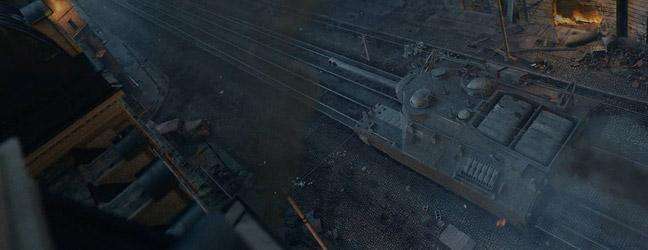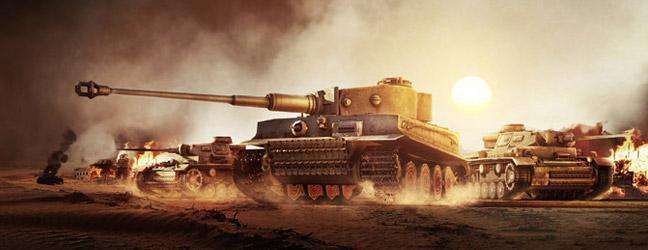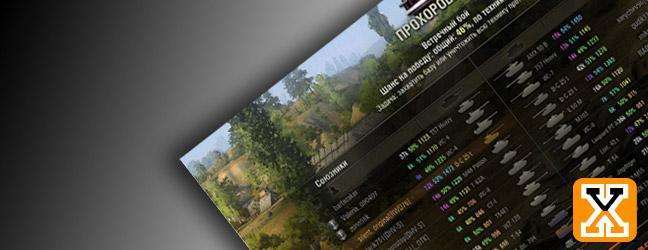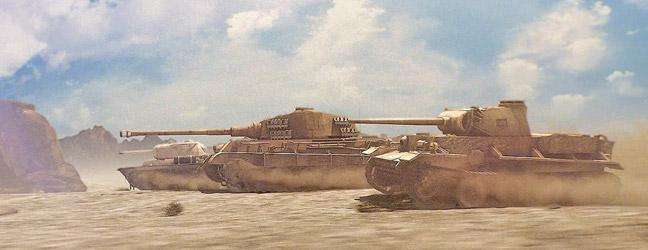IS-7 "Autoloader"
Дата: 20.12.2013 12:20:51
 Vlevs, on 20 December 2013 - 02:33 AM, said: Can't disagree on the internet urban legend. Imagination
(and national pride) tends to fill any gaps in knowledge. Still,
some quite knowledgeable people are convinced of IS-7's excellency
as a machine, and I really can't say I know any better. But some
things I do disagree with. First, armor protection. I really
can't say how faithful WG has been in this regard, but frontal
protection should be very good. So good, that I can't think of any
weapon prior to 105 mm L7 APDS (1959) going through it at range.
Early HEAT munitions were quite sensitive to angle, and IS-7's
front has plenty of that. IS-7 is immune to Bazooka and PIAT at any
horizontal angle. Second, anti-armor performance is strong
for the era, and doesn't seem to fall short of 120 mm L1, thus
easily defeating any western tank until Chieftain (1966). This
gives the design 10 years of immunity against rivals. Also, IS-7
was in theory possible to up-gun to 130 mm M-65 gun that could fire
APDS, thus making it relevant up to 1980s. Third, it's been
mentioned that IS-7 prorotypes were more reliable than contemporary
T-54 protos. The one that caught fire had supposedly reached the
end of its engine's service life. Yes, a tank that spontaneously
combusts when its 'warranty' runs out is a bit troublesome.
Fourth, the tank's power-to-weight ratio is close to T-54's and its
height is similar. Both of these are better than contemporary
western tanks, so saying it's a sluggish large target is wrong.
Also it would've fit within Soviet railway loading gauge, and thus
was rail-transportable. None of the Cold War tanks was
transportable in western European rails. I can't see IS-7
exhibiting Maus-levels of logistical planning fail.
Vlevs, on 20 December 2013 - 02:33 AM, said: Can't disagree on the internet urban legend. Imagination
(and national pride) tends to fill any gaps in knowledge. Still,
some quite knowledgeable people are convinced of IS-7's excellency
as a machine, and I really can't say I know any better. But some
things I do disagree with. First, armor protection. I really
can't say how faithful WG has been in this regard, but frontal
protection should be very good. So good, that I can't think of any
weapon prior to 105 mm L7 APDS (1959) going through it at range.
Early HEAT munitions were quite sensitive to angle, and IS-7's
front has plenty of that. IS-7 is immune to Bazooka and PIAT at any
horizontal angle. Second, anti-armor performance is strong
for the era, and doesn't seem to fall short of 120 mm L1, thus
easily defeating any western tank until Chieftain (1966). This
gives the design 10 years of immunity against rivals. Also, IS-7
was in theory possible to up-gun to 130 mm M-65 gun that could fire
APDS, thus making it relevant up to 1980s. Third, it's been
mentioned that IS-7 prorotypes were more reliable than contemporary
T-54 protos. The one that caught fire had supposedly reached the
end of its engine's service life. Yes, a tank that spontaneously
combusts when its 'warranty' runs out is a bit troublesome.
Fourth, the tank's power-to-weight ratio is close to T-54's and its
height is similar. Both of these are better than contemporary
western tanks, so saying it's a sluggish large target is wrong.
Also it would've fit within Soviet railway loading gauge, and thus
was rail-transportable. None of the Cold War tanks was
transportable in western European rails. I can't see IS-7
exhibiting Maus-levels of logistical planning fail.TheKroo: IS-7 was for sure a fine and "luxurious" tank. Sadly it had
the traditional flaw many German tanks shared with it - it was
over-engineered and quite heavy(too heavy in Soviet eyes).
IS-7 "Autoloader"














